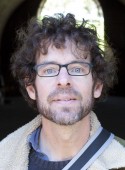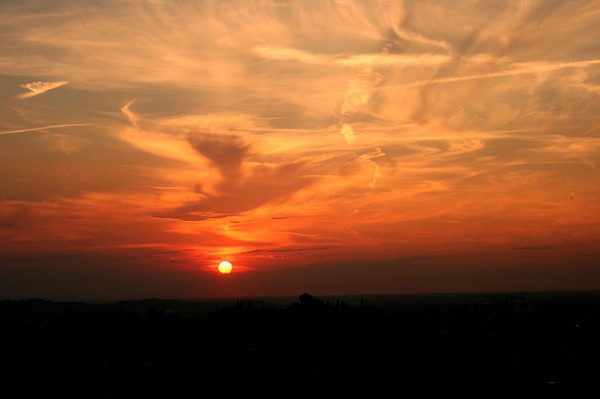
Nature and art have been closely linked since the dawn of art itself. From the cave paintings of prehistory to the abstract landscapes of the 20th century, artists have sought a variety of ways to tame, harness, or convey the power of nature. In advance of “How Does Architecture Imitate Life?”, a Zócalo event, we asked several contemporary artists to write about how their work draws on nature.
The sounds of nature are central to my work
I grew up in Brooklyn, New York, and, for a good part of my life, I was not listening to the world outside with any appreciation. Surprisingly, a residency in the World Trade Center in 1999 resulted in my getting invited to travel to the Brazilian Amazon to visit a group of Yanomami people in a very remote village. The first morning, the eldest shaman told me (via a translator) that it was a shame that I’d slept late, as the animals had come down from the mountain to be recorded by my machines.
I’d never been anywhere so wild and had never received such advice. It was during that trip that I began to train my ears, to listen with a deeper awareness and to start to hear the orchestral beauty of the night sounds of insects and frogs giving way to the morning thunder of howler monkeys, and then bird song, cicadas, and the voices of the people in the village. I started to pay attention to sound in relation to proximity, distance, depth, layers, textures, and rhythms in a whole new way.
The majority of my work in the past nine years has involved field recording and finding ways to translate what I hear (and sometimes see) into sound works. At times, the sounds are left clean. At other times, they are manipulated, sometimes beyond recognition. Nature has informed not only the field recordings but also my approach to instruments. I realized soon after purchasing an analog synthesizer that I was seeking out somewhat chaotic rhythms that were influenced by the frogs I had recorded in a marsh in Virginia. I now listen to the acoustics of a given gallery space, but I also do all I can to listen to acoustics that go far beyond the immediate architecture.
Stephen Vitiello is an electronic musician and media artist. He is currently an associate professor of kinetic imaging at Virginia Commonwealth University.
————————————-
I draw on the adaptability of nature
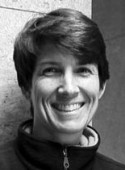
Like natural organisms, cities (and the buildings we create) are living, breathing systems that constantly change and adapt to different external conditions.
Like natural organisms, we strive to create an architecture that is not fixed, that can be changed by the user, or that adapts to the environment in all of its variety. Our design process is the continuation of an ongoing inquiry, adapting to the environment and the program, resulting in a space that is unique and meets functional needs even more than thought possible.
What makes a building beautiful?
We believe that architecture should engage the user, heighten their sense of awareness, and bring a deeper understanding and vitality to their experience. The act of making and mass-producing a building material can produce wildly varying and beautiful patterns, not unlike the patterns in nature. A simple shift or difference in structure or appearance, in an otherwise monolithic element, creates beauty and interest. Repeating this simple structure can result in beautiful, functional spatial wrappers or screens, which, with the introduction of natural light, produce constantly changing spaces. A solid wood wall becomes a rippling waterfall. A perforated aluminum wall becomes a translucent wrapper, constantly changing shape and appearance, depending on the mood of the owner.
Helping you forget the name of what you see, in order to really see it, is the tool with which we work.
Angela Brooks is a principal architect for the Los Angeles firm Brooks + Scarpa. She is also a founding member and past board president of Livable Places.
————————————-
I strive–perpetually–to capture some of the mystery and grandeur of nature on paper

I’ve recently started living halftime in a small ocean town (a half-fulfillment of a lifelong wish) and walking along the Atlantic Ocean every day I’m there. While the “world of nature” (in my case the ocean) has always profoundly informed aesthetic decisions in my work–color, line, opacity, surface, content–I’ve just begun to realize how much of it is based on selective data that I reconstruct as a universal nature in a windowless studio in downtown Newark, New Jersey.
That is, nature processed and filtered through a human-made, densely urban lens that shrinks, flattens, idealizes, and dims. The visual, sonic, and tactile essence of the natural world is represented through suggestive metaphors and incomplete sentences. Nature is omnipresent in my work through vague, coded, static, and reductive symbols. And I’m okay with that.
During a nighttime drive on an unfinished New Jersey highway (coincidentally not so far from my walking route), sculptor Tony Smith said he saw a “reality there which had not had any expression in art.” The Atlantic Ocean (or the Rocky Mountains or the Egyptian desert, for that matter) provides many of those moments–deeply visceral and all-sense encompassing. Is it futile to try to capture that on a piece of fancy paper? Maybe. But regular exposure to that scale and dynamism keeps me interested in trying.
Dahlia Elsayed combines text and imagery to create visually narrative paintings that document internal and external geographies. She lives and works in New Jersey.
————————————-
I marvel at the fragility and changeability of nature
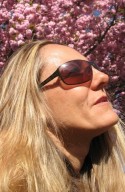
Thoreau accidentally burned down 100 acres of forest as a young man broiling a fish. Then he spent the rest of his life writing about the forest.
Nature is ever intimate and never to be known. It thrills and awes in ways that people don’t (unless we are in love). All my work, written and painted, speaks to its power. It’s our truest hour.
I wish we would all drop what we’re doing and honor it. That’s what drives my work.
Over 100 years ago, Heidegger asked questions we might ask today:
And finally what was left was only “scenery” and recreational opportunity and even this still calculated into the gigantic and arranged for the masses. Is this the end? Why does earth keep silent in this destruction? Because, the more gigantic that giant-thing called man becomes, the smaller he also becomes? Must nature be surrendered and abandoned to machination? Are we still capable of seeking earth anew?
I paint and print on transparent fabric, because its adaptability and fragility mimic nature. I like things beautiful, streamlined, and detailed, with a complexity of underlying structure and meaning, and a passion in execution. Nature is good at doing all that. Nature’s passion is in camouflage. The ways things stay hidden to stay alive. But, like all passion, it gives us away in the end. Nature has not been successful at hiding from us.
After a big storm I found a giant dragonfly on Canal Street. I carried it to a large potted plant to recover. Its long laddered wings were a world I’ll never visit. Its eyes were huge and saw my home from angles I will not. It told me things I still think about. I looked for it a day later, and it was gone.
Desirée Alvarez is a painter, fabric artist, printmaker, and poet who was born and lives in New York City.
————————————-
Nature influences how I try go about creating projects
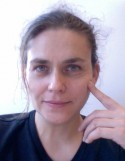
The world of nature has been cited as a prime inspiration for many experimentally oriented architectural practices over the last decade–either through deploying tools capable of generating organic forms through complex algorithms “found in nature” or through necessary returns to sustainable practices. It’s likely Matter Practice has, consciously or not, been influenced by these resultant cultural aesthetics. It’s just in the air.
I think we do draw from nature, but it’s primarily through the manner in which we develop our projects–far from a clean desk and the deep belly of a sophisticated processing machine–as opposed to imitative aspirations. On some of our most successful projects, we’ve selected the material first and then allowed the project’s form to “emerge,” so to speak, through examining how certain assemblies behave.
Experimenting, making models, prototyping full-scale details, developing methods of construction, plenty of testing and producing things that fail–indeed thinking with our hands–in our in-house shop is an integral part of our process, often leading us to material solutions undiscoverable through cerebral exercises alone. Perhaps what we are striving for is the perfect play between the manmade artifact and the natural world: where inherent idiosyncrasies of material behavior are not seen as forces to be tamed, but rather strategies for efficiently realizing the objective of things “falling” into place.
All of this is sort of contrary to proper architecture training, in which precision and prediction are seen as pinnacles of craft, but we keep finding ourselves returning to a quote from David Pye in The Nature and Art of Workmanship:
‘The essential idea is that the quality of the result is continually at risk during the process of making; and so I shall call this kind of workmanship ‘The workmanship of risk’: an uncouth phrase, but at least descriptive.’”
Sandra Wheeler co-founded Matter Practice, which encompasses architecture, exhibition design, custom fabrication and speculative proposals for the public environment.




